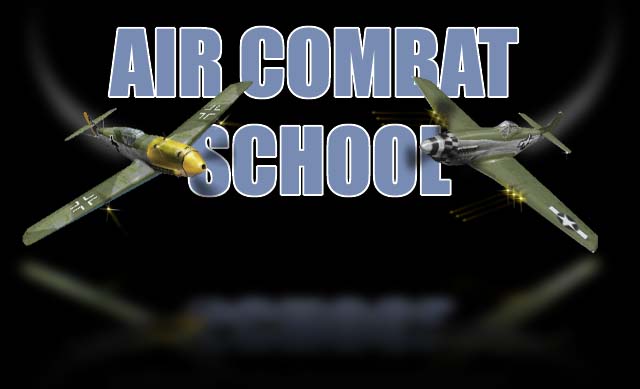
European Air War

Air Combat School
Two vs. One Tactics
A team of two fighters operating in mutual support is known as a Section in the RAF and USAAF or a Rotte in the Luftwaffe. In most cases, two fighters working in concert with one another are more capable than the sum of them working alone, and more survivable as well.
All single-seat fighters have blind spots that cannot be monitored by the pilot, and in addition, any combat maneuvering demands that the pilot's full attention be devoted to the opponent, providing very little defense against an attack from a second opponent. Operating in a team of two fighters, with one pilot covering the blind spot of the other during an engagement, is one remedy for this problem.
Section tactics employed during the WWII typically designate a leader and a wingman. The leader essentially fights the opponent one-versus-one, while the wingman flies a rather loose formation on the leader and maintains a defensive lookout. The wingman should fly in a position roughly in the leader's tail, with enough separation to preclude any danger of collision.
How this can improve the defensive coverage can be seen on the following two basic section maneuvers:
The "Bracket" is used to counter attacks by a single opponent from the front. You should split the section by breaking one direction and ordering your wingman to break away in the opposite direction to increase the lateral separation. This would force the opponent to choose and engage only one of the section. The pilot of the engaged aircraft should turn toward the attacker into a head-to-head pass. Meanwhile, the unengaged member of the section should be able to engage from a offensive position behind the attacker.
The "Sandwich" can be used to counter attacks from the rear, especially when it is apparent which member of the section is being engaged. If you are attacked from behind, you should break into the attack, and then order your wingman to break in the same direction. If the attacker follows you in a pursuit, your wingman can move into position behind the attacker, effectively 'sandwiching' him between you and your wingman. Similary, if your wingman is attacked, you should order him to break into the attack, and by breaking in the same direction, you should be able to engage the attacker from his rear.
In addition to providing a better defense, section tactics have several other advantages as well. Offensively, it allows the leader to concentrate on the attack knowing that his vulnerable area is covered by his wingman. Often, an enemy fighter's defensive reaction to the leader's attack sets up a shot for the wingman. Also, less training is required for a pilot to stay with his leader than to survive on his own. Trained fighter pilots are almost always in short supply, and this team approach allows inexperienced pilots to gain valuable combat experience at a reduced risk.
This material was included in the original 1998 release of European Air War by Microprose.
